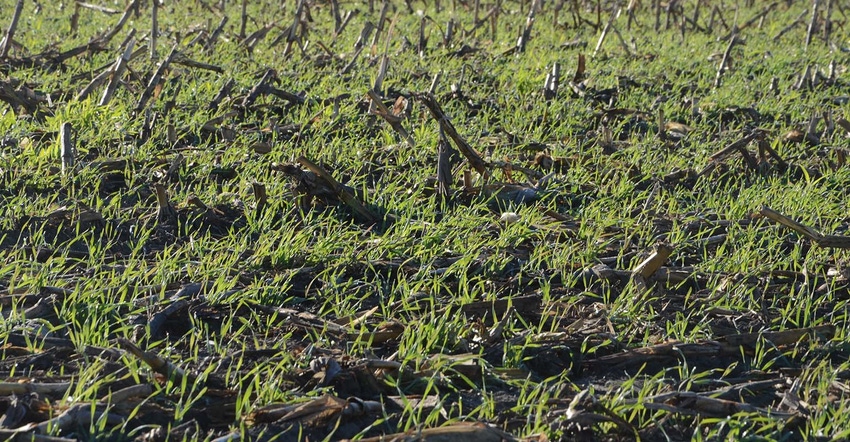May 31, 2019

Since Colonial times, America’s soils have lost 50% to 70% of their organic matter, degrading the capacity of our soils to produce food, feed, and fiber. Cornell University says the U.S. is losing topsoil ten times faster than it can be replaced by nature. Restoring the health of our soils would reduce flooding, reduce polluted runoff from agriculture, store carbon in the soil, boost farm profits, make farms more resilient to droughts, and improve our ability to produce food for a growing population.
A new report, “State and Local Soil Health Strategies,” from the Izaak Walton League of America highlights some of the best state and local policy ideas from around the country designed to improve soil health.
Here’s some of the ideas.
The New York Soil Health Roadmap “identifies key policy, research and education efforts to overcome barriers to adoption of soil health practices by farmers.” The Roadmap was developed by New York Soil Health, an initiative coordinated by Cornell University. The Roadmap also “identifies strategies for integrating soil health goals with state priorities focused on environmental issues such as climate change and water quality.” Find the Roadmap at: http://bit.ly/NYsoilhealth
A Healthy Soils Task Force was appointed by the governor of Nebraska to “develop a comprehensive healthy soils initiative for the state of Nebraska.” The initiative includes developing a comprehensive action plan and developing a timeline to improve soil health in Nebraska within five years of the completion of the action plan. Read more at http://bit.ly/NEtaskforce
A law enacted in 2019 in New Mexico creates the Healthy Soil Program in the state Department of Agriculture “to promote and support farming and ranching systems and other forms of land management that increase soil organic matter, aggregate stability, microbiology and water retention to improve the health, yield and profitability of the soils of the state.” The new program includes a healthy soil assessment and education program and a grants program. The assessment and education program includes education and outreach to farmers, a baseline soil health assessment, development of a network of soil health champions, and public education. The legislature provided $455,000 to implement the bill and for research on soil health monitoring. See: http://bit.ly/NMhealthysoil
In November, 2017, the Iowa Department of Agriculture and Land Stewardship announced a new $5 per acre discount on crop insurance for farmers who plant cover crops. The discount was championed by Bill Northey, then Iowa’s Commissioner of Agriculture and currently USDA Undersecretary for Farm Production and Conservation. IDALS worked with the USDA Risk Management Agency to establish a 3-year demonstration project aimed at expanding the use of cover crops in Iowa. Funds come from the Iowa Water Quality Initiative. The discount is provided through the crop insurance companies that service federally subsidized crop insurance policies in Iowa. It is not available to farmers who are receiving cost-share for planting cover crops through the USDA suite of conservation programs or Iowa’s own state cost-share program. The discount (or lack of one) shows up on a line of the crop insurance invoice that farmers pay, which has helped stimulate interest in cover crops from farmers who view the invoice and see there is a discount they are not getting. IDALS reports that 700 farmers enrolled nearly 170,000 acres of cover crops in the pro- gram in the first year of the demonstration project. Read more at http://bit.ly/IAdiscount
The South Jersey Resource Conservation & Development Council serving southern New Jersey acquired a roller-crimper which it loans out to area farmers who want to try it out as a method of terminating cover crops. Cover crops have typically been terminated using chemicals such as glyphosate, but that poses a problem for organic growers and substantial costs for other growers. Roller-crimpers, invented by the Rodale Institute, can be used as an alternative to (or in addition to) chemical burn-down. See more at http://bit.ly/CTinitiative
These innovative state and local initiatives can yield a bountiful crop of public benefits, including reduced runoff of sediment and nutrients, carbon stored in the soil, reduced flooding, more resilient farmlands, and stronger rural communities. The report summarizes two dozen state and local soil health initiatives from around the country.
Source: Izaak Walton League, which is solely responsible for the information provided and is wholly owned by the source. Informa Business Media and all its subsidiaries are not responsible for any of the content contained in this information asset.
You May Also Like




